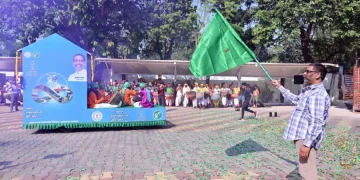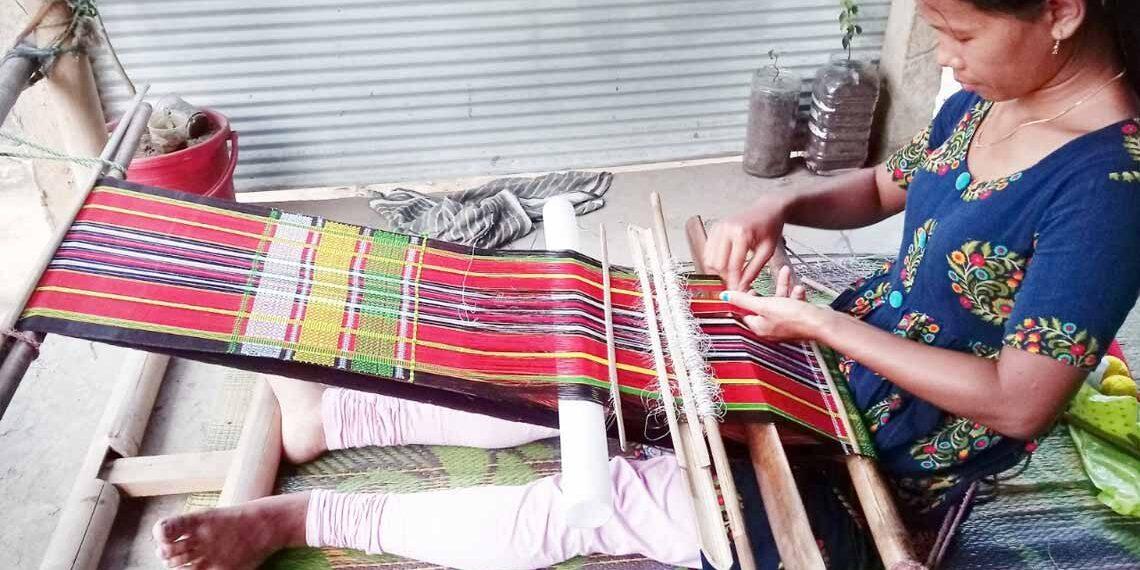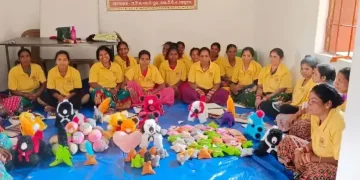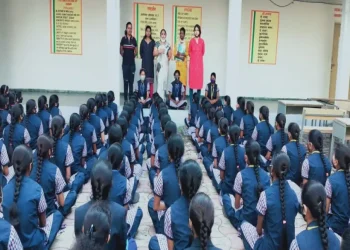Typically, all tribal women from Tripura wear an ankle-length wraparound called Rignai. The upper half of the body is covered by two pieces of garment — Risa (also called Riha) and Rikutu. While the Risa specifically covers the chest area, the Rikutu covers the entire torso.
The usual costume for men in Tripura is a loose cloth resembling a towel known as Rikutu Gamcha that is worn with a shirt known as Kubai. During the summer months, the menfolk wear a turban, or Pagri, to protect themselves from excessive heat and humidity.
In the yesteryears, these garments were made from homespun cotton threads. These days, though, the threads are bought from the market. Also, by and large, the Risa has been substituted by the blouse, and many young girls from Tripura wear the Rignai with tops too.
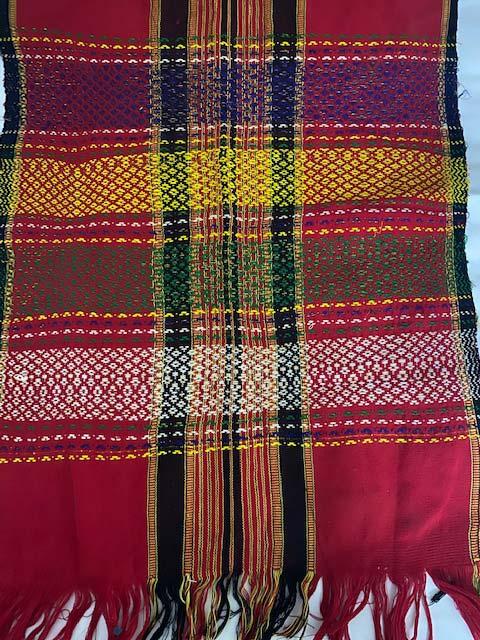
The background of the Risa is usually a shade of blue-black but sometimes it can be red too. The main feature of Tripuri handlooms is vertical and horizontal stripes with embroidery (in scattered patterns) in different colours.
The embroidered motifs could be stars, dots, flowers or designs unique to a tribe. Chakma, Kuki, Lussai and Reang are the main tribes of the State. Each has its own specific designs and motifs for weaving shawls and wrappers.
Interestingly, it has long been believed that in Tripura, legends are sung and woven into the fabrics. Moreover, colours are symbolic and, hence, very significant. The worst punishment a weaver can ever get is to be forbidden the use of a colour or colours.
Even today, Tripuri women in rural households prefer to weave their own Risa and Rignai, generally on the loin or backstrap loom. Other handloom products that are woven include lungi, sari, chaddar and scarves.
The Reang tribe of Tripura uses natural dyes obtained from plants for black, blue and brown yarn that is made from hand-spun cotton.
The tribes of Tripura are also known for the Lasingphee, which is woven cloth with cotton wads. This thick and warm cloth is used for quilts, covers, scarves and bedspreads.
Jewellery is very popular among the Tripuri women, and are made of silver, bronze, copper, agate stone, glass beads and coins. They also have bamboo and cane ornaments, exquisite and intricately crafted. These are unique to Tripura and not available anywhere else in the world.
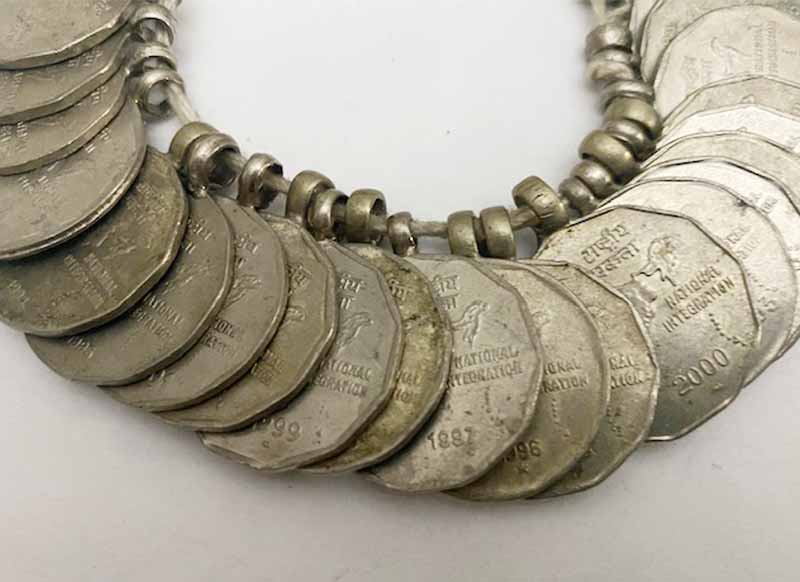
Tribals of Tripura wear necklaces made of coins or silver. The bangles, nose rings and earrings are made of either silver or bronze. Also, even today, flowers are used as ornaments by the tribals in remote areas.







